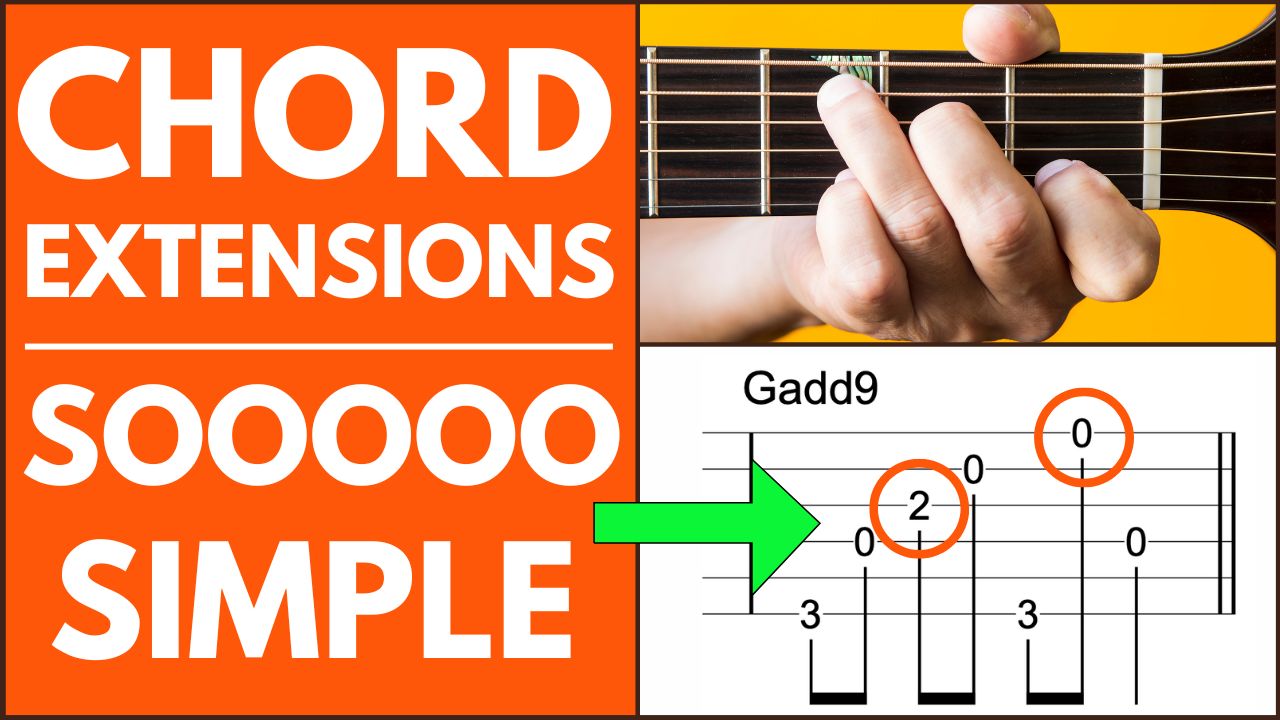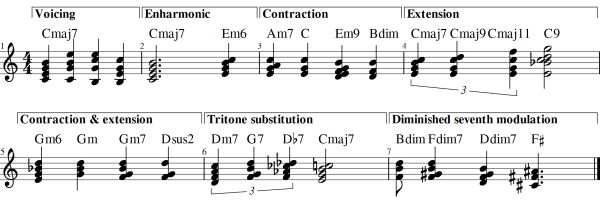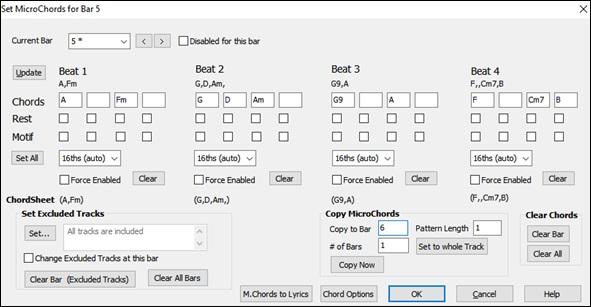Are you tired of playing the same old basic chords on your guitar? Ready to take your skills to the next level and impress your friends with some customized, mind-blowing tunes? Well, grab your guitar and get ready to embark on a musical adventure with our step-by-step workshop on mastering custom guitar chords. Get ready to unleash your inner rockstar and let your fingers do the talking in ways you never thought possible. But fair warning, once you start down this path, there’s no turning back. So buckle up and prepare to rock and roll like never before!
Contents
- 1 Understanding the Basics of Guitar Chord Construction
- 2 Exploring Open and Movable Chord Shapes
- 3 The Role of Music Theory in Crafting Custom Chords
- 4
- 5 Innovative Techniques for Extended and Altered Chords
- 6 Integrating Custom Chords into Your Playing Style
- 7 Evaluating Progress and Next Steps in Chord Mastery
- 8 FAQs
- 9 Keep Rockin’ with Your Own Unique Sound!
Understanding the Basics of Guitar Chord Construction
So, you’ve picked up a guitar and you’re ready to rock out like the next Jimi Hendrix. But wait, what are all these weird shapes on the fretboard? Don’t worry, my aspiring rockstars, it’s just the magic of guitar chord construction.
First things first, let’s talk about the three basic ingredients of a chord:
- Root note – the foundation of the chord, like the bread in a sandwich
- Third – adds flavor to the chord, like the mustard on that sandwich
- Fifth – gives the chord its stability, like the lettuce holding it all together
Now, when you combine these three ingredients in different combinations and variations, you get different types of chords. Who knew making music could be as simple as making a sandwich?

Exploring Open and Movable Chord Shapes
Are you tired of playing the same old boring chords on your guitar? Well, it’s time to spice things up with open and movable chord shapes! These versatile shapes will take your playing to a whole new level, allowing you to experiment with different sounds and create unique chord progressions.
Open chords are a great way to add some color to your music. By leaving strings unfretted, you can create a more resonant and open sound. Movable chord shapes, on the other hand, can be shifted up and down the neck, allowing you to play the same chord in different positions. This versatility opens up a world of possibilities for your playing.
So, how do you go about exploring these open and movable chord shapes? Well, it’s simple! Start by familiarizing yourself with some basic open chords like **C**, **G**, and **D**. Once you’ve got those down, try experimenting with moving them around the neck to create new chord voicings. Before you know it, you’ll be jamming out to your own unique chord progressions.
Don’t be afraid to get creative and mix and match different open and movable chord shapes. Who knows, you might stumble upon a new favorite chord that will become a staple in your playing. So grab your guitar and start exploring the wide world of open and movable chord shapes!

The Role of Music Theory in Crafting Custom Chords
Unlocking the Secret Power of Music Theory
So, you fancy yourself a musical maestro, huh? Well, strap in because we’re about to dive into the mystical world of music theory, where complex chords and harmonies come to life in ways you never thought possible. By understanding the fundamentals of music theory, you’ll be able to craft custom chords that will make your ears perk up and your heart sing.
Think of music theory as your trusty sidekick, guiding you through the treacherous waters of chord progression and harmony. Armed with this knowledge, you’ll be able to break free from the shackles of basic major and minor chords and venture into uncharted territory where augmented, diminished, and suspended chords reign supreme.
With music theory as your guiding light, you’ll be able to create chord progressions that will have your listeners on the edge of their seats, eagerly anticipating what comes next. Say goodbye to boring, predictable chord structures and hello to a world where each chord is a unique masterpiece crafted with care and precision.
So, next time you sit down at your piano or pick up your guitar, remember the power that music theory holds. Embrace the challenge of crafting custom chords that will elevate your music to new heights and leave your audience begging for more. The possibilities are endless when you unlock the secrets of music theory – so grab your instrument and get ready to rock out like never before!

scales-and-intervals-to-create-unique-sounds”>Applying Scales and Intervals to Create Unique Sounds
So you’re tired of playing the same old boring scales and intervals on your instrument, huh? Well, fear not, my friend! I’m here to show you how you can spice things up and create some truly unique and funky sounds by applying scales and intervals in a whole new way.
First off, let’s talk about scales. Sure, your basic major and minor scales are all fine and dandy, but why not try something a little more exotic? How about the Phrygian dominant scale or the whole tone scale? These scales will add a whole new dimension to your playing and make you sound like a musical genius in no time.
Next up, let’s chat about intervals. Instead of sticking to your typical perfect fifths and minor sevenths, why not experiment with some augmented fourths or diminished fifths? These intervals may sound a little weird at first, but trust me, they can add some serious spice to your musical compositions.
So there you have it, folks! By thinking outside the box and getting creative with your scales and intervals, you can create some truly unique and mind-blowing sounds. So go ahead, grab your instrument, and start experimenting. Who knows, you may just stumble upon the next big musical breakthrough!

Innovative Techniques for Extended and Altered Chords
Have you ever wanted to take your chord progressions to the next level? Look no further! We’re diving into some cutting-edge techniques for extended and altered chords that will have you sounding like a musical genius in no time.
First up, let’s talk about extended chords. These bad boys take your standard major or minor chords and add some extra spice. Think of them as the gourmet toppings on your musical pizza. Experiment with adding 7ths, 9ths, 11ths, and even 13ths to your chords for a richer, more complex sound that will leave your listeners begging for more.
Now, onto altered chords. These babies are like the chameleons of the chord world, constantly changing color and shape to keep things interesting. Try substituting your standard chords with altered versions like augmented, diminished, or suspended chords for a unique and unexpected twist that will have your audience on the edge of their seats.
But wait, there’s more! Why stop at extended and altered chords when you can combine the two for maximum musical impact? Mix and match different extensions and alterations to create chord progressions that will blow your mind and elevate your music to new heights. The possibilities are endless, so go forth and unleash your inner chord wizard!
Integrating Custom Chords into Your Playing Style
So, you’ve mastered all the basic chords and you’re ready to take your guitar playing to the next level by . Congratulations! You’re about to embark on a magical journey that will elevate your music to epic proportions.
Custom chords are like the secret sauce of guitar playing – they add flavor, depth, and complexity to your songs. But incorporating them into your repertoire can be a bit challenging at first. Fear not, brave guitarist! With a little practice and a whole lot of determination, you’ll soon be wowing audiences with your unique chord creations.
One tip for incorporating custom chords into your playing style is to experiment with different finger positions and voicings. Don’t be afraid to deviate from the standard shapes – the beauty of custom chords lies in their unpredictability and creativity. Mix things up, try new combinations, and see where your musical journey takes you.
Remember, practice makes perfect. The more you play around with custom chords, the more comfortable you’ll become incorporating them into your playing. Before you know it, you’ll be effortlessly weaving custom chords into your songs like a true guitar virtuoso. So go forth, brave guitarist, and conquer the world of custom chords with boldness and panache!
Evaluating Progress and Next Steps in Chord Mastery
So you’ve been diligently practicing your chords on the guitar, trying to master the elusive F#m7b5 and the tricky Bb7sus4. You’ve spent countless hours contorting your fingers into unnatural positions and cursing at the seemingly never-ending buzz of your strings. But fear not, fellow chord warrior, for progress is being made!
First off, let’s take a moment to **celebrate** the small victories. Remember that time you nailed the Gmaj7 chord on the first try? Or when you finally managed to transition smoothly from Dm to A? Those are the moments that make all the calloused fingertips and sore wrists worth it.
Now, as we evaluate our progress, it’s important to identify the areas where we still need improvement. Perhaps you’re still struggling with barre chords, or maybe you can’t quite get the timing right when switching between chords. Whatever the case may be, don’t be discouraged! **Keep pushing** yourself and remember that even the greatest guitar gods started out as mere mortals.
As we look towards the next steps in our chord mastery journey, let’s set some goals for ourselves. Maybe you want to learn a new chord progression, or tackle a particularly challenging chord shape. Whatever it may be, **stay motivated** and keep strumming away. And remember, Rome wasn’t built in a day – and neither was a flawless rendition of “Wonderwall”.
FAQs
Can I create my own custom guitar chords?
Of course! That’s what this workshop is all about. With a little creativity and experimentation, you can come up with some truly unique and interesting chord shapes.
How do I know which custom chords will sound good?
The beauty of custom chords is that there are no rules! Trust your ears and go with what sounds pleasing to you. Don’t be afraid to break out of the traditional chord shapes and try something new.
Are there any tips for mastering custom guitar chords?
Practice, practice, practice! The more you work on these custom chords, the more comfortable you’ll become with them. Also, don’t be afraid to ask for feedback from other musicians – sometimes an outside perspective can be incredibly helpful.
What equipment do I need for this workshop?
All you need is your guitar and a willingness to experiment. You might find it helpful to have a pencil and paper handy to jot down any chord shapes you come up with that you like.
Can I use custom guitar chords in my own music?
Absolutely! Custom chords can add a whole new dimension to your music and help you stand out from the crowd. Experiment with incorporating them into your compositions and see where they take you.
What if I get stuck on a particular chord shape?
Don’t get discouraged! Take a break, clear your mind, and come back to it with fresh ears. Sometimes a little time away from the problem can lead to a breakthrough. And remember, there are no wrong answers when it comes to custom chords – it’s all about exploring and having fun.
Keep Rockin’ with Your Own Unique Sound!
Congratulations on taking the first step towards mastering custom guitar chords! With practice and perseverance, you’ll soon be strumming and picking your way to musical greatness. So grab your guitar, get those fingers moving, and don’t be afraid to experiment with new chord shapes and progressions. Remember, music is all about having fun, so rock on and keep creating those killer custom chords!



